The NVIDIA GeForce GTX 1080 & GTX 1070 Founders Editions Review: Kicking Off the FinFET Generation
by Ryan Smith on July 20, 2016 8:45 AM ESTFast Sync & SLI Updates: Less Latency, Fewer GPUs
Since Kepler and the GTX 680 in 2012, one of NVIDIA’s side projects in GPU development has been cooking up ways to reduce input lag. Under the watchful eye of NVIDIA’s Distinguished Engineer (and all-around frontman) Tom Petersen, the company has introduced a couple of different technologies over the years to deal with the problem. Kepler introduced adaptive v-sync – the ability to dynamically disable v-sync when the frame rate is below the refresh rate – and of course in 2013 the company introduced their G-Sync variable refresh rate technology.
Since then, Tom’s team has been working on yet another way to bend the rules of v-sync. Rolling out with Pascal is a new v-sync mode that NVIDIA is calling Fast Sync, and it is designed to offer yet another way to reduce input lag while maintaining v-sync.
It’s interesting to note that Fast Sync isn’t a wholly new idea, but rather a modern and more consistent take on an old idea: triple buffering. While in modern times triple buffering is just a 3-deep buffer that is run through as a sequential frame queue, in the days of yore some games and video cards handled triple buffering a bit differently. Rather than using the 3 buffers as a sequential queue, they would instead always overwrite the oldest buffer. This small change had a potentially significant impact on input lag, and if you’re familiar with old school triple buffering, then you know where this is going.
With Fast Sync, NVIDIA has implemented old school triple buffering at the driver level, once again making it usable with modern cards. The purpose of implementing Fast Sync is to reduce input lag in modern games that can generate a frame rate higher than the refresh rate, with NVIDIA specifically targeting CS:GO and other graphically simple twitch games.
But how does Fast Sync actually reduce input lag? To go into this a bit further, we have an excellent article on old school triple buffering from 2009 that I’ve republished below. Even 7 years later, other than the name the technical details are all still accurate to NVIDIA’s Fast Sync implementation.
What are Double Buffering, V-sync, and Triple Buffering?
When a computer needs to display something on a monitor, it draws a picture of what the screen is supposed to look like and sends this picture (which we will call a buffer) out to the monitor. In the old days there was only one buffer and it was continually being both drawn to and sent to the monitor. There are some advantages to this approach, but there are also very large drawbacks. Most notably, when objects on the display were updated, they would often flicker.
In order to combat the issues with reading from while drawing to the same buffer, double buffering, at a minimum, is employed. The idea behind double buffering is that the computer only draws to one buffer (called the "back" buffer) and sends the other buffer (called the "front" buffer) to the screen. After the computer finishes drawing the back buffer, the program doing the drawing does something called a buffer "swap." This swap doesn't move anything: swap only changes the names of the two buffers: the front buffer becomes the back buffer and the back buffer becomes the front buffer.
After a buffer swap, the software can start drawing to the new back buffer and the computer sends the new front buffer to the monitor until the next buffer swap happens. And all is well. Well, almost all anyway.
In this form of double buffering, a swap can happen anytime. That means that while the computer is sending data to the monitor, the swap can occur. When this happens, the rest of the screen is drawn according to what the new front buffer contains. If the new front buffer is different enough from the old front buffer, a visual artifact known as "tearing" can be seen. This type of problem can be seen often in high framerate FPS games when whipping around a corner as fast as possible. Because of the quick motion, every frame is very different, when a swap happens during drawing the discrepancy is large and can be distracting.
The most common approach to combat tearing is to wait to swap buffers until the monitor is ready for another image. The monitor is ready after it has fully drawn what was sent to it and the next vertical refresh cycle is about to start. Synchronizing buffer swaps with the Vertical refresh is called V-sync.
While enabling V-sync does fix tearing, it also sets the internal framerate of the game to, at most, the refresh rate of the monitor (typically 60Hz for most LCD panels). This can hurt performance even if the game doesn't run at 60 frames per second as there will still be artificial delays added to effect synchronization. Performance can be cut nearly in half cases where every frame takes just a little longer than 16.67 ms (1/60th of a second). In such a case, frame rate would drop to 30 FPS despite the fact that the game should run at just under 60 FPS. The elimination of tearing and consistency of framerate, however, do contribute to an added smoothness that double buffering without V-sync just can't deliver.
Input lag also becomes more of an issue with V-sync enabled. This is because the artificial delay introduced increases the difference between when something actually happened (when the frame was drawn) and when it gets displayed on screen. Input lag always exists (it is impossible to instantaneously draw what is currently happening to the screen), but the trick is to minimize it.
Our options with double buffering are a choice between possible visual problems like tearing without V-sync and an artificial delay that can negatively affect both performance and can increase input lag with V-sync enabled. But not to worry, there is an option that combines the best of both worlds with no sacrifice in quality or actual performance. That option is triple buffering.
The name gives a lot away: triple buffering uses three buffers instead of two. This additional buffer gives the computer enough space to keep a buffer locked while it is being sent to the monitor (to avoid tearing) while also not preventing the software from drawing as fast as it possibly can (even with one locked buffer there are still two that the software can bounce back and forth between). The software draws back and forth between the two back buffers and (at best) once every refresh the front buffer is swapped for the back buffer containing the most recently completed fully rendered frame. This does take up some extra space in memory on the graphics card (about 15 to 25MB), but with modern graphics card dropping at least 512MB on board this extra space is no longer a real issue.
In other words, with triple buffering we get almost the exact same high actual performance and similar decreased input lag of a V-sync disabled setup while achieving the visual quality and smoothness of leaving V-sync enabled.
Note however that the software is still drawing the entire time behind the scenes on the two back buffers when triple buffering. This means that when the front buffer swap happens, unlike with double buffering and V-sync, we don't have artificial delay. And unlike with double buffering without V-sync, once we start sending a fully rendered frame to the monitor, we don't switch to another frame in the middle.
The end result of Fast Sync is that in the right cases we can have our cake and eat it too when it comes to v-sync and input lag. By constantly rendering frames as if v-sync was off, and then just grabbing the most recent frame and discarding the rest, Fast Sync means that v-sync can still be used to prevent tearing without the traditionally high input lag penalty it causes.
The actual input lag benefits will in turn depend on several factors, including frame rates and display refresh rates. The minimum input lag is still the amount of time it takes to draw a frame – just like with v-sync off – and then you have to wait for the next refresh interval to actually display the frame. Thanks to the law of averages, the higher the frame rate (the lower the frame rendering time), the better the odds that a frame is ready right before a screen refresh, reducing the average amount of input lag. This is especially true on 60Hz displays where there’s a full 16.7ms between frame draws and a traditional double buffered setup (or sequential frame queue).
NVIDIA’s own example numbers are taken from monitoring CS:GO with a high speed camera. I can’t confirm these numbers – and as with most marketing efforts it’s like a best-case scenario – but their chart isn’t unreasonable, especially if their v-sync example uses a 3-deep buffer. Input lag will be higher than without v-sync, but lower (potentially much so) than with v-sync on. Overall the greatest benefits are with a very high framerate, which is why NVIDIA is specifically targeting games like CS:GO, as a frame rate multiple times higher than the refresh rate will produce the best results.
With all of the above said, I should note that Fast Sync is purely about input lag and doesn’t address smoothness. In fact it may make things a little less smooth because it’s essentially dropping frames, and the amount of simulation time between frames can vary. But at high framerates this shouldn’t be an issue. Meanwhile Fast Sync means losing all of the power saving benefits of v-sync; rather than the GPU getting a chance to rest and clock down between frames, it’s now rendering at full speed the entire time as if v-sync was off.
Finally, it’s probably useful to clarify how Fast Sync fits in with NVIDIA’s other input lag reduction technologies. Fast Sync doesn’t replace either Adaptive V-Sync or G-Sync, but rather compliments them.
- Adaptive V-Sync: reducing input lag when framerates are below the refresh rate by selectively disabling v-sync
- G-Sync: reducing input lag by refreshing the screen when a frame is ready, up to the display’s maximum refresh rate
- Fast Sync: reducing input lag by not stalling the GPU when the framerate hits the display’s refresh rate
Fast Sync specifically deals with the case where frame rates exceed the display’s refresh rate. If the frame rate is below the refresh rate, then Fast Sync does nothing since it takes more than a refresh interval to render a single frame to begin with. And this is instead where Adaptive Sync would come in, if desired.
Meanwhile when coupled with G-Sync, Fast Sync again only matters when the frame rate exceeds the display’s maximum refresh rate. For most G-Sync monitors this is 120-144Hz. Previously the options with G-Sync above the max refresh rate were to tear (no v-sync) or to stall the GPU (v-sync), so this provides a tear-free lower input lag option for G-Sync as well.



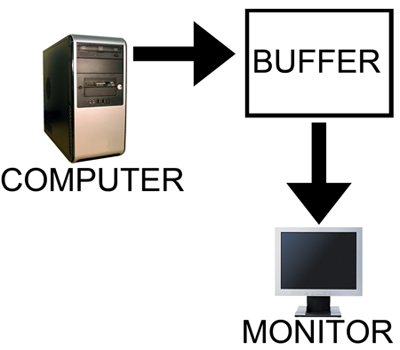
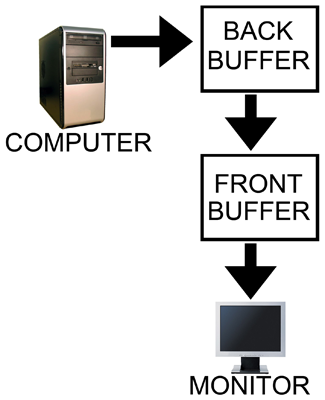
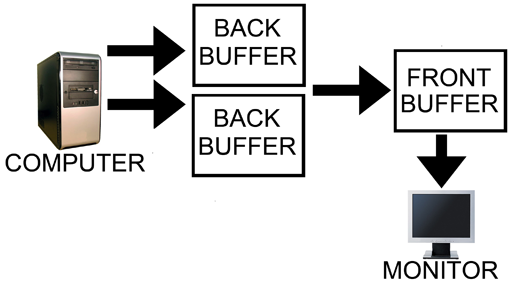
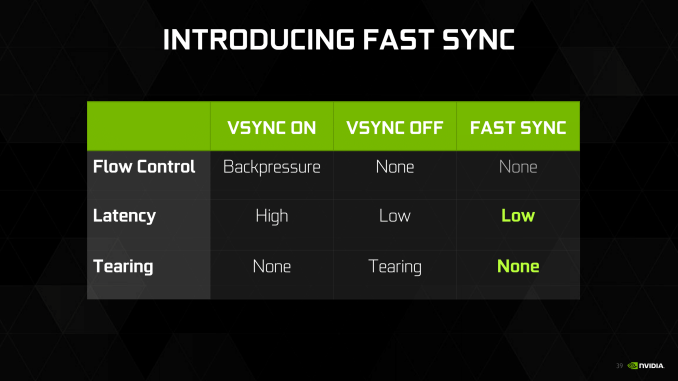
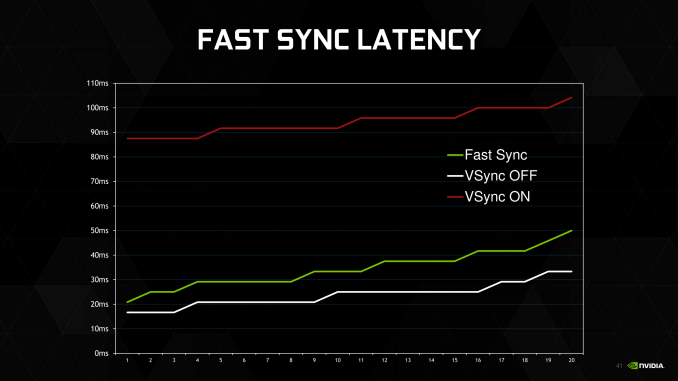








200 Comments
View All Comments
TestKing123 - Wednesday, July 20, 2016 - link
Sorry, too little too late. Waited this long, and the first review was Tomb Raider DX11?! Not 12?This review is both late AND rushed at the same time.
Mat3 - Wednesday, July 20, 2016 - link
Testing Tomb Raider in DX11 is inexcusable.http://www.extremetech.com/gaming/231481-rise-of-t...
TheJian - Friday, July 22, 2016 - link
Furyx still loses to 980ti until 4K at which point the avg for both cards is under 30fps, and the mins are both below 20fps. IE, neither is playable. Even in AMD's case here we're looking at 7% gain (75.3 to 80.9). Looking at NV's new cards shows dx12 netting NV cards ~6% while AMD gets ~12% (time spy). This is pretty much a sneeze and will as noted here and elsewhere, it will depend on the game and how the gpu works. It won't be a blanket win for either side. Async won't be saving AMD, they'll have to actually make faster stuff. There is no point in even reporting victory at under 30fps...LOL.Also note in that link, while they are saying maxwell gained nothing, it's not exactly true. Only avg gained nothing (suggesting maybe limited by something else?), while min fps jumped pretty much exactly what AMD did. IE Nv 980ti min went from 56fps to 65fps. So while avg didn't jump, the min went way up giving a much smoother experience (amd gained 11fps on mins from 51 to 62). I'm more worried about mins than avgs. Tomb on AMD still loses by more than 10% so who cares? Sort of blows a hole in the theory that AMD will be faster in all dx12 stuff...LOL. Well maybe when you force the cards into territory nobody can play at (4k in Tomb Raiders case).
It would appear NV isn't spending much time yet on dx12, and they shouldn't. Even with 10-20% on windows 10 (I don't believe netmarketshare's numbers as they are a msft partner), most of those are NOT gamers. You can count dx12 games on ONE hand. Most of those OS's are either forced upgrades due to incorrect update settings (waking up to win10...LOL), or FREE on machine's under $200 etc. Even if 1/4 of them are dx12 capable gpus, that would be NV programming for 2.5%-5% of the PC market. Unlike AMD they were not forced to move on to dx12 due to lack of funding. AMD placed a bet that we'd move on, be forced by MSFT or get console help from xbox1 (didn't work, ps4 winning 2-1) so they could ignore dx11. Nvidia will move when needed, until then they're dominating where most of us are, which is 1080p or less, and DX11. It's comic when people point to AMD winning at 4k when it is usually a case where both sides can't hit 30fps even before maxing details. AMD management keeps aiming at stuff we are either not doing at all (4k less than 2%), or won't be doing for ages such as dx12 games being more than dx11 in your OS+your GPU being dx12 capable.
What is more important? Testing the use case that describes 99.9% of the current games (dx11 or below, win7/8/vista/xp/etc), or games that can be counted on ONE hand and run in an OS most of us hate. No hate isn't a strong word here when the OS has been FREE for a freaking year and still can't hit 20% even by a microsoft partner's likely BS numbers...LOL. Testing dx12 is a waste of time. I'd rather see 3-4 more dx11 games tested for a wider variety although I just read a dozen reviews to see 30+ games tested anyway.
ajlueke - Friday, July 22, 2016 - link
That would be fine if it was only dx12. Doesn't look like Nvidia is investing much time in Vulkan either, especially not on older hardware.http://www.pcgamer.com/doom-benchmarks-return-vulk...
Cygni - Wednesday, July 20, 2016 - link
Cool attention troll. Nobody cares what free reviews you choose to read or why.AndrewJacksonZA - Wednesday, July 20, 2016 - link
Typo on page 18: "The Test""Core i7-4960X hosed in an NZXT Phantom 630 Windowed Edition" Hosed -> Housed
Michael Bay - Thursday, July 21, 2016 - link
I`d sure hose me a Core i7-4960X.AndrewJacksonZA - Wednesday, July 20, 2016 - link
@Ryan & team: What was your reasoning for not including the new Doom in your 2016 GPU Bench game list? AFAIK it's the first indication of Vulkan performance for graphics cards.Thank you! :-)
Ryan Smith - Wednesday, July 20, 2016 - link
We cooked up the list and locked in the games before Doom came out. It wasn't out until May 13th. GTX 1080 came out May 14th, by which point we had already started this article (and had published the preview).AndrewJacksonZA - Wednesday, July 20, 2016 - link
OK, thank you. Any chance of adding it to the list please?I'm a Windows gamer, so my personal interest in the cross-platform Vulkan is pretty meh right now (only one title right now, hooray! /s) but there are probably going to be some devs are going to choose it over DX12 for that very reason, plus I'm sure that you have readers who are quite interested in it.